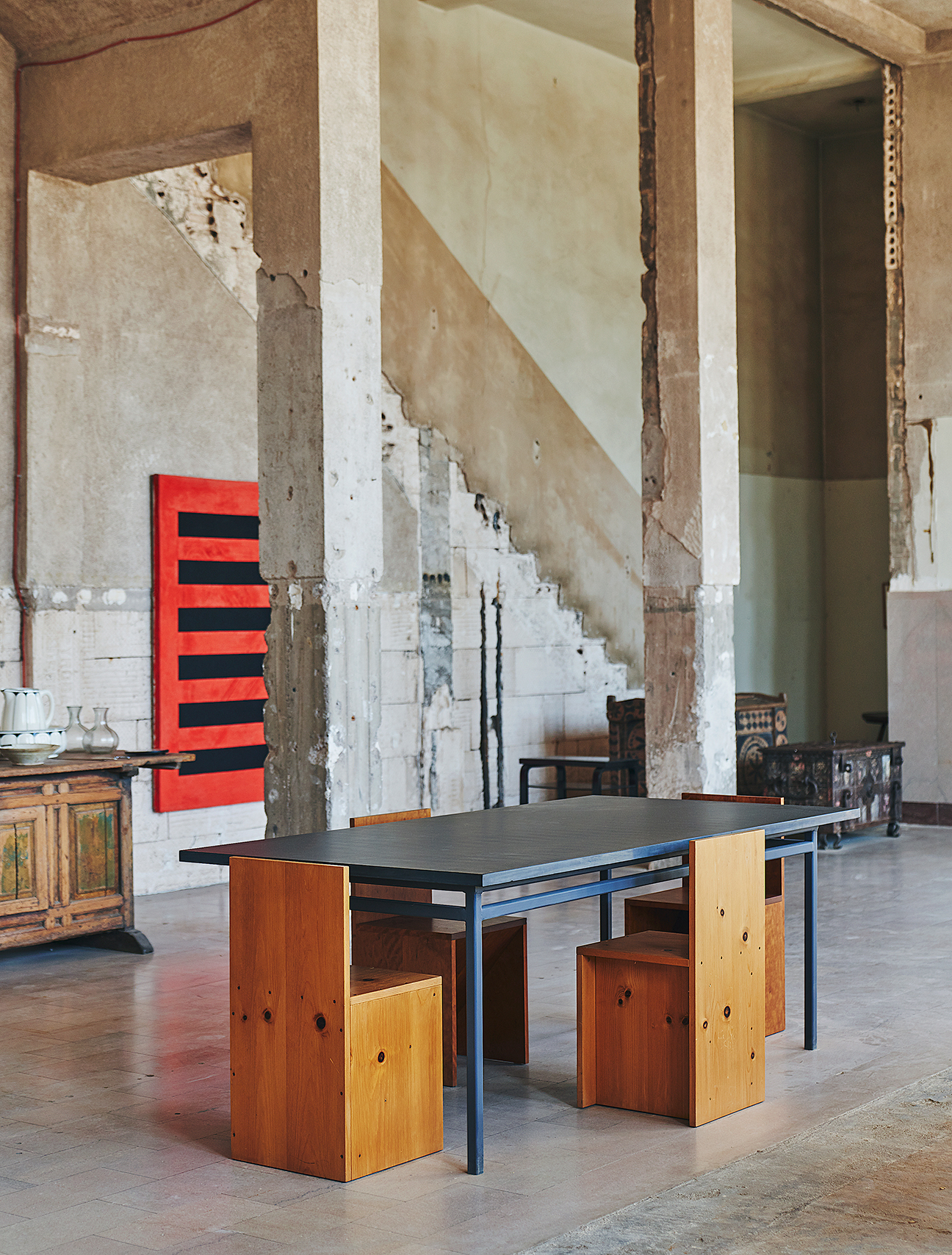We may earn revenue from the products available on this page and participate in affiliate programs.
A few humble pine planks were all Donald Judd needed to create a chair that is now considered the essential pared-down seat. Although the legendary 20th-century American artist and pioneer of minimalism (a term he nevertheless strongly disliked) considered his art and design as separate, it’s not hard to see his furniture as a functional expression of his approach to form—using the same attention to proportion, scale, and geometry as in the famed metal, Plexiglas, and concrete works that defined his career.

Rather than being pegged to any particular era, the pieces have been an inspiration to artists and designers over the past 50 years. But if Judd were ever to have a moment, it’s now. In March 2020, New York’s Museum of Modern Art launched a major retrospective, gathering his sculptures, drawings, and paintings; the book Donald Judd Spaces was released the same month; and additional exhibitions rolled out through the spring.

Beyond the museum and gallery setting, Judd’s furniture is rooted in scrappy resourcefulness. And nowhere is that more apparent than at his home and work studios at 101 Spring Street in New York City and in Marfa, Texas, where he moved from Manhattan in the early 1970s with his daughter Rainer and son Flavin.


In a little house on the edge of town, Judd created a simple platform bed for his kids with a divider to separate their shared room, using 1-by-12 pine planks sourced from a local lumberyard. The piece—like many others that were soon sketched—came out of necessity, of being 200 miles from a major airport, and of “not having access to any decent furniture,” explains Flavin. “He started from absolute scratch.”

When the family settled into the Block—a sunbathed compound downtown that included two former airplane hangars to install Judd’s art; a small residence; pool; pergola; garden; and menagerie of chickens, dogs, kittens, and geese, among other creatures—the designs “really took off,” according to Rainer, encompassing more than 90 variations on seating, desks, beds, shelving, and tables by the time of the artist’s death in 1994.


The furniture has long been quietly available for custom orders (a little known fact outside of design circles), fabricated according to Judd’s original specifications in a range of hardwoods, pine, and plywood, as well as metal pieces in powder-coated and anodized aluminum, brass, and copper. With the launch of the Donald Judd Furniture website in 2017 and the yearly introduction of in-stock items (the latest addition for spring: Chair 84 in two configurations), the designs are becoming more readily accessible than ever. That’s in large part thanks to Rainer and Flavin, who oversee the Judd Foundation.

Taking on the challenge of fulfilling their father’s wishes to preserve his permanently installed spaces meant preventing that legacy from becoming static. They keep it alive and vital by giving greater access to Judd’s thinking—from dusting off furniture prototypes that could potentially be put into production to publishing comprehensive volumes of his writing and interviews to hosting free public events, like the annual stargazing night at the Block and opening up Casa Perez (one of Judd’s rustic ranch properties outside of town) for a barbecue cookout under the pergolas and talks about the local wildlife. The siblings purposefully kept the archives and records in Marfa, where Rainer is based much of the year, so that people could experience firsthand the environment that influenced Judd.


Visiting his personal spaces is to be immersed in his world. The endless stretch of desert provided the backdrop for Judd’s exploration of volume and negative space, offering “more room to think” and, on a practical level, more room to work with. Spatial relationships were important to him—in art but also in domestic surroundings. “It’s generally an exception that something hugs the wall,” explains Rainer of Judd’s preference for things to have “a natural, floating-in-a-space placement.”

The long dining table at the Block residence might suggest that the chairs should follow suit and all perfectly align. “But what feels more comfortable and relaxed is if they’re pulled out and slightly askew,” she says. Another surprise: the daybed on the opposite side of the room overlooking the fireplace. As a child, Rainer would sit with her father while the heat warmed the wood frame, generating a coziness that doesn’t necessarily leap to mind when you see the daybed out of context.


In contrast to the ultra-spare style often associated with Judd, his eclectic (and extensive) collections of fine art, handmade crafts, pottery, Navajo blankets, and books—13,000 volumes on literature and history, art and architecture, philosophy and science make up the library—tell another story. “On top of being a voracious reader, he was a voracious collector of culture,” says Flavin. From stocking up on locally made rag rugs on trips to Missouri to purchasing the works of craftspeople from Mexico and the Native American tribes of the Southwest and Pacific Northwest, he wanted “to support people making things, especially by hand,” echoes Rainer. At home, Judd’s own timeless designs complement rather than compete with all the storied objects he brought in, sparking a dialogue across eras and cultures.

That visual sensibility of paring something down to its most essential—in furniture and in art—still resonates. In some ways, the animating drive behind Judd’s work—ingenuity, curiosity, and a refusal of complacency—encourages a different mode of seeing the world. “I’ve become more aware of just how self-reliant [my dad] was,” says Rainer. “What a free state of mind to have a utilitarian challenge, and then think, I’m going to design a solution—whether a kitchen counter or kids’ beds. He was exploring things that matter to everybody in terms of questioning everything around you.”
This story was originally published in our Spring 2020 issue with the headline “True to Form.”
